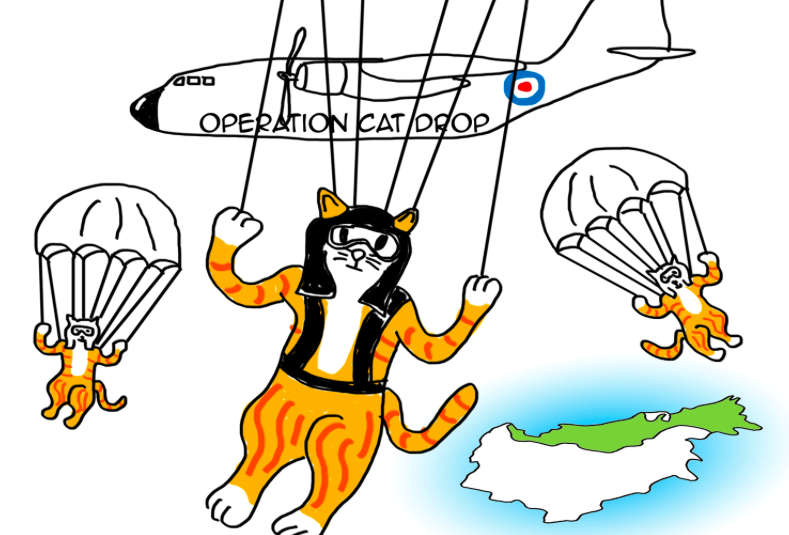Operation Cat Drop

The flying cats: a precautionary tale advocating for systems thinking
Operation cat drop is a much beloved cautionary tale, used to illustrate interconnectivity and relationship, and highlight the value of systemic thinking.
It's a powerful, alleged true parable from Borneo in the 1950's. And it's easy to see why it's so often used as the perfect example of getting it wrong.
If you've not heard it before, it goes a little like this.
In the 1950's the Dayak people of Borneo experienced a Malaria outbreak. So they called the World Health Organisation. The World Health Organisation responded by spraying the island with potent amounts of DDT, which successfully killed the malaria carrying mosquitoes.
However, it also led to some unexpected results.
The first was the sudden collapsing of the islands thatched roofs. Turns out that the DDT had killed off a particular parasite that kept the population of a species of caterpillar in check. The caterpillars free from killer parasites, rapidly multiplied and munched their ways through their chosen diet- the islander's roofs.
The second was that the DDT also wriggled its way into a food web that began with the very same DDT resistant bugs, led to geckos, who were then as it turns out the diet of choice for the islands cats. Unfortunately the cats couldn't tolerate the DDT in their bellies and pretty soon they began to die, eventually dwindling to numbers too small to keep the rat population in check.
This then resulted in Borneo's rat population holding an impromptu party of celebration, multiplying like crazy and wreaking havoc, not only by eating their way through pretty much everything they could find, including the villager's grain supplies, but also by introducing the plague.
In desperation Borneo once more turned to the World Health Organisation, whose somewhat creative response was to attempt to restore equilibrium by parachuting in a battalion of cats, (courtesy of the RAF of course). The cats as cats do, hunted the rats and restored balance to Borneo.
Now we know that all good stories have a moral, and this one is no exception. The moral of the story is obvious- when making an intervention think about how everything connects, how one action results in an effect somewhere else and that knocks onto somewhere else. Nothing happens in isolation.
The irony of the story is that the tale is so beloved, that in the style of all good stories it has developed a life of its own. Providing fuel for newspaper columnists, poets, and story writers all over the world. With ingenious descriptions, glorious illustrations and multiple variations, it now bears all the hallmarks of not being true at all, of being nothing more than a myth based in the loose facts of reality.
...you should have seen them,...the little parachutes and harnesses we’d tricked up, 14,000 of them, cats in every colour of the rainbow, cats with one ear, no ears, half a tail, three-legged cats,...all of them twirling down out of the sky like great big oversized snowflakes. (T. Coraghessan Boyle in Top of the Food Chain)
But the startling fact is that researchers have found that while the tale may be somewhat exaggerated the grounding facts of the story are actually true.
- There was a malaria outbreak
- WHO did provide DDT
- Caterpillars did eat roofs
- Cats did die and more were parachuted in
And it seems, (according to the Association of former WHO staff*) that the RAF did indeed airdrop them in.
Thought the itty bitty detail of how and why all of this happened changes to suit the narrator's imagination.
I guess it comes down to you to make your own mind up- Operation Cat Drop hoax or history?
Either way, whatever the source, it remains a useful illustration of the interconnectivity of ecological systems and of the relationship between actions and consequences.
The flying cats a precautionary tale advocating for systems thinking.
Graphics and information from:


One Reply to “Operation Cat Drop”